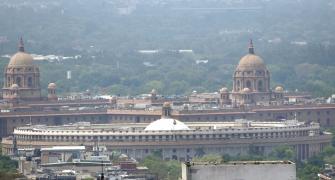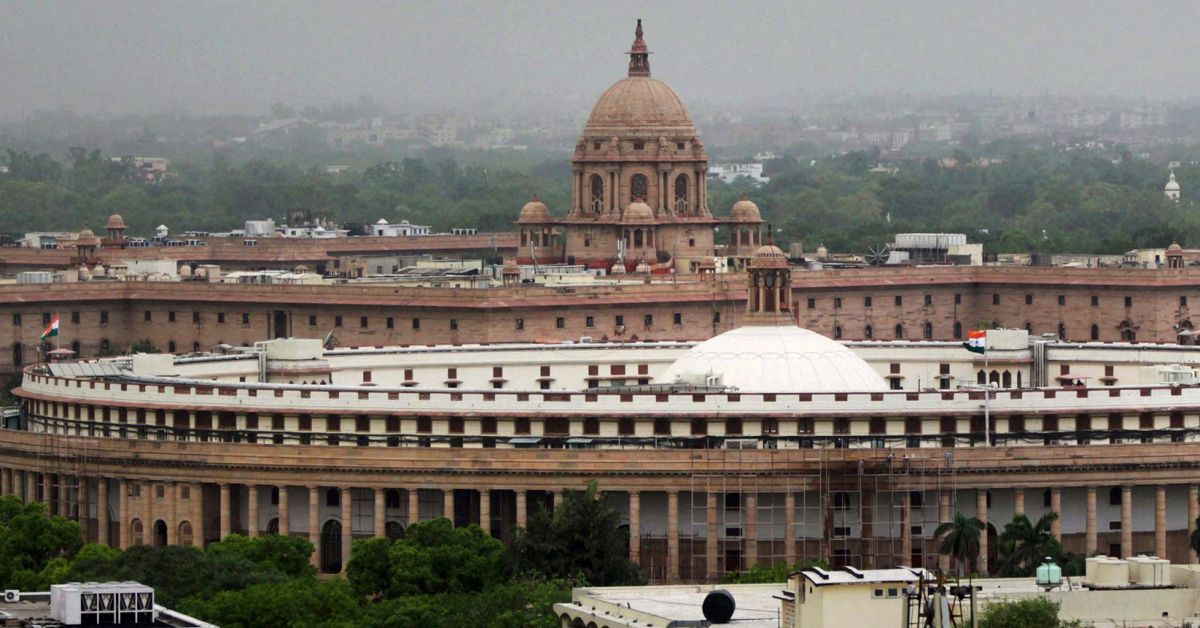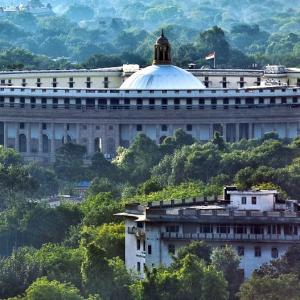Historians and conservation architects describe the old edifice as a "repository of India's history" and its "democratic ethos", and an "architectural jewel" of Delhi.

The Parliament House, which may soon hand over its position as the country's hallowed legislature to a new complex inaugurated four months ago, has stood for over 96 years as a sentinel of time and a repository of India's democratic journey.
Opened on January 18, 1927, by Lord Irwin -- the then viceroy -- amid fanfare, the landmark has witnessed colonial rule, the Second World War, the dawn of Independence, the adoption of the Constitution, and the passage of many legislations -- some landmark and many controversial.
The government on Wednesday listed a special discussion on the Parliament's 75-year journey, starting from the Samvidhan Sabha, on the first day of the five-day session beginning on September 18.
The session is likely to see the proceedings of Parliament move from the old building to the new complex in its vicinity.
Prime Minister Narendra Modi inaugurated the new complex on May 28 and expressed hope that it would become a cradle of empowerment, igniting dreams and nurturing them into reality.
Several MPs and people from different walks of life, including celebrities, had praised the construction of the new complex when it was inaugurated.
Once legislative businesses move into the new state-of-the-art building, India will, in many ways, turn a page.
Historians and conservation architects describe the old edifice as a "repository of India's history" and its "democratic ethos", and an "architectural jewel" of Delhi.
The historic building, with its circular design and an impressive colonnade of 144 creamy sandstone on the first floor, was opened at a time the new imperial capital of the British Raj -- New Delhi -- was being built at a site in the Raisina Hill area.
According to archival documents and rare old images, a grand ceremony was held to mark the opening of the building, then called the Council House.
The building, with a diameter of 560 feet and circumference of a third of a mile, was designed by Sir Herbert Baker who, along with Sir Edwin Lutyens, was chosen to design the new imperial capital in Delhi.
According to the book New Delhi: Making of a Capital by Malvika Singh and Rudrangshu Mukherjee, Lord Irwin had arrived in his viceregal carriage at a pavilion set up at the Great Place (now Vijay Chowk) and then "proceeded to open the door of the Council House with a golden key, handed to him by Sir Herbert Baker."
The opening of the Parliament House building, revered today as India's temple of democracy, was much talked about then in both the domestic and the foreign press.
The sprawling edifice covering an area of nearly six acres is one of the most distinctive parliament buildings anywhere in the world and among the most defining and widely-recognised structures.
The last legislative sitting in the building till the end of August was the Monsoon session, which concluded on August 11.
The session provided 17 sittings over 23 days.
The multi-chequered history of the old Parliament building will be frozen in time if the proceedings move to the new complex during the five-day session.
"The Parliament House is not just an iconic building, it is a repository of history and a repository of our democracy," noted conservation architect and urban planner AGK Menon told PTI.
He said the government built the new complex citing greater requirement of space in the future and added that it is part of the Central Vista redevelopment project.
"But, the question is, was it really needed? Could we not have discussed and found ways to improve amenities in the old Parliament (building) and continued in it the tradition of democracy, which the building symbolises? Wide consultations should have been held before going ahead with such a project," he argued.
This is a landmark building that witnessed the dawn of free India, its famed chambers heard the echoes of first prime minister Jawaharlal Nehru's "Tryst with destiny" speech and where the Constituent Assembly sat, discussed and adopted the Constitution, Menon said.
The Constituent Assembly had its first meeting on December 9, 1946, in the central chamber (Central Hall) and adopted the Constitution on November 26, 1949.
The Constitution came into effect on January 26, 1950, signifying the birth of the Republic of India.
Anil Krishna (74) recalls his late centenarian father Kewal Krishan, who was part of the drafting committee of the Constituent Assembly, and his association with the old Parliament building.
"I visited Parliament as a child with my father. The two places I vividly remember is my dad's office and the Parliament canteen. We are reading that the Parliament will soon shift to the new complex, which was needed as more space and facilities were required with time," he told PTI.
Krishan, who would have turned 110 in July, died a few months ago, his son said.
An old sepia-toned image of a group photograph taken in February 1948 with BR Ambedkar, the architect of the Constitution, sitting in front at the centre and Krishan standing behind him is part of the family's well-preserved archives, Krishna said.
Another family has preserved archival pictures associated with the Parliament and the Constituent Assembly.
A group picture of the members of the Constituent Assembly, taken on the Parliament premises, was shot by AR Datt & Sons Studios, one of the oldest studios in Delhi.
Studio founder AR Datt's grandson Anuj Datt told PTI, "My grandfather used a panoramic camera to capture such a large number of people in one frame."
When discussions will be held on 'Parliamentary Journey of 75 years starting from Samvidhan Sabha - Achievements, Experiences, Memories and Learnings', the legacy of the old Parliament building will, in a way, come full circle before it slips into the pages of history, handing over the baton to the new complex.
The new triangular-shaped four-storey building has a built-up area of 64,500 square metres.
It will also have a grand Constitution Hall to showcase India's democratic heritage, a lounge for MPs, library, multiple committee rooms, dining areas and ample parking space.









